31+ Sample Funding Proposals
-

Financial Funding Proposal Template
download now -

Business Funding Proposal Cover Letter Template
download now -
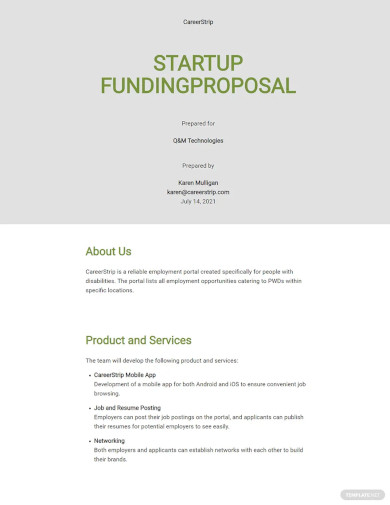
Free Editable Startup Funding Proposal Template
download now -
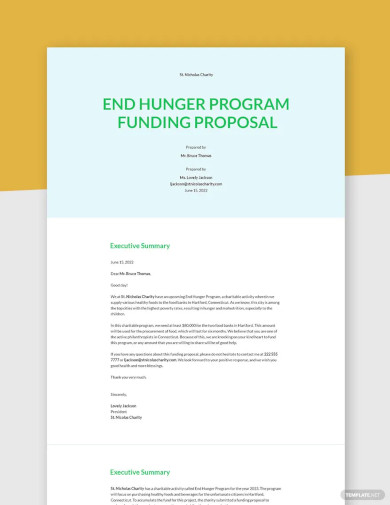
Non-Profit Funding Proposal Template
download now -

Startup Funding Proposal Template
download now -
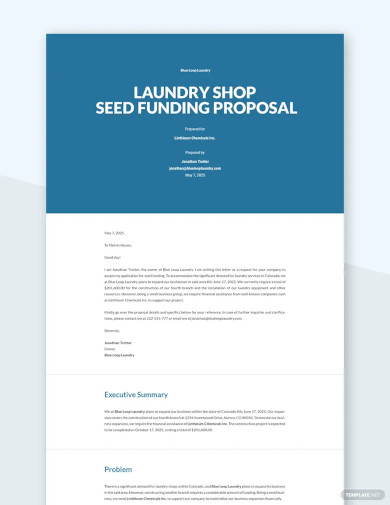
Seed Funding Proposal Template
download now -
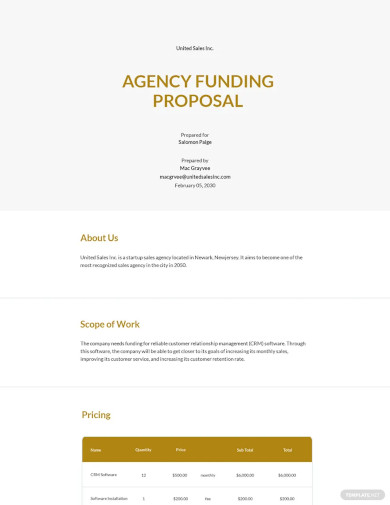
Agency Funding Proposal Template
download now -
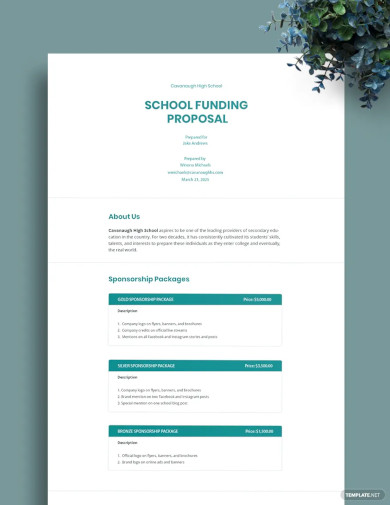
Free School Funding Proposal Template
download now -
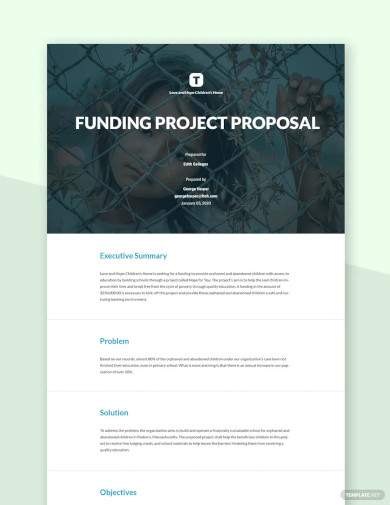
Funding Project Proposal Template
download now -
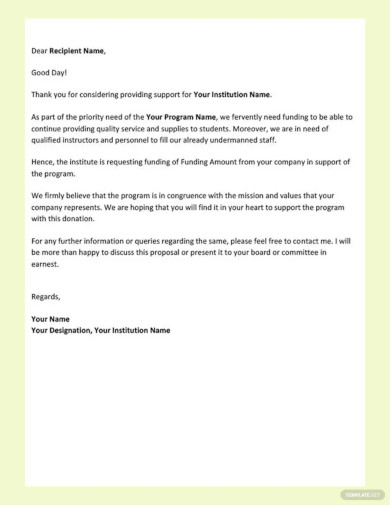
Proposal Letter Template for Funding
download now -
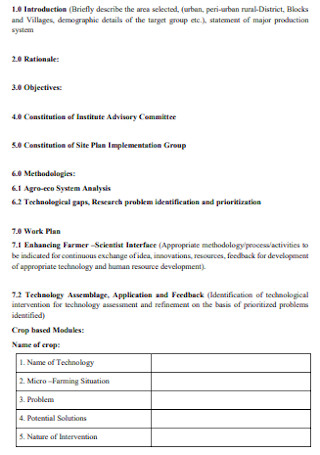
NGO Project Funding Proposal
download now -
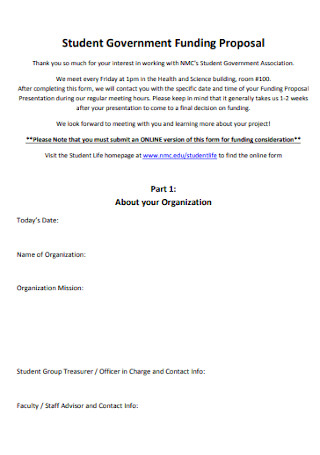
Student Government Funding Proposal
download now -
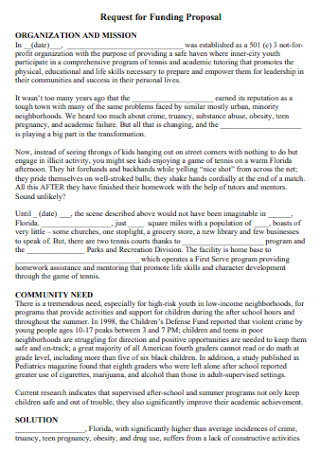
Request for Funding Proposal
download now -

Research Grant Funding Proposal
download now -
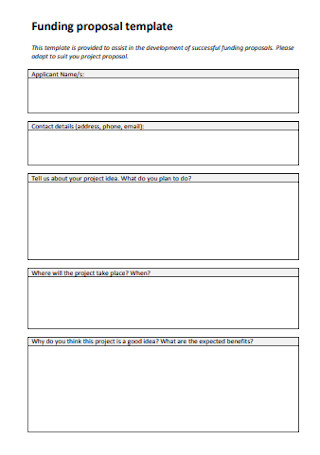
Sample Business Funding Proposal
download now -
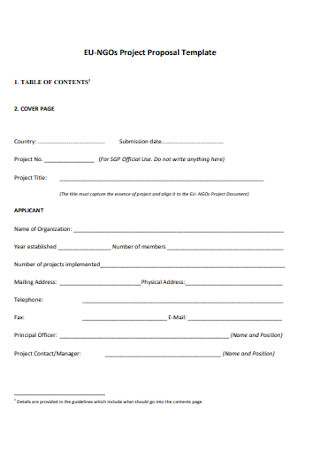
Funding Financial Project Proposal
download now -

Funding Support Proposal Letter
download now -
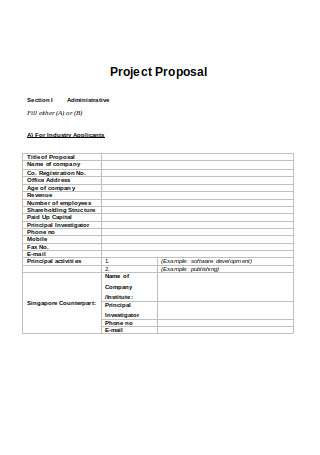
Small Business funding Project Proposal
download now -

Request for Funding Proposal Form
download now -
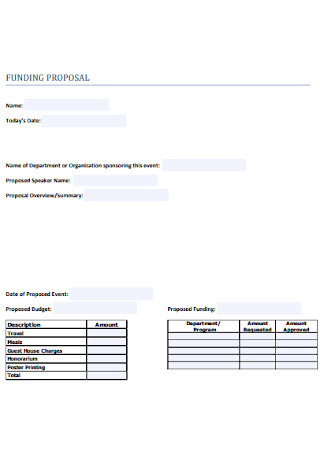
Real Estate Investment Funding Proposal
download now -
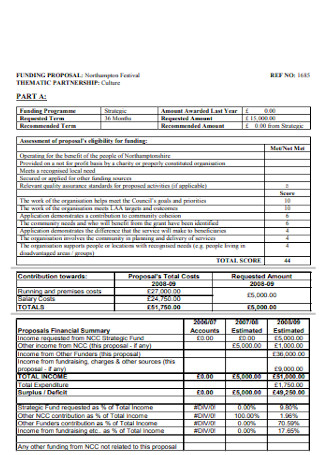
Funding Event Partnership Proposal
download now -
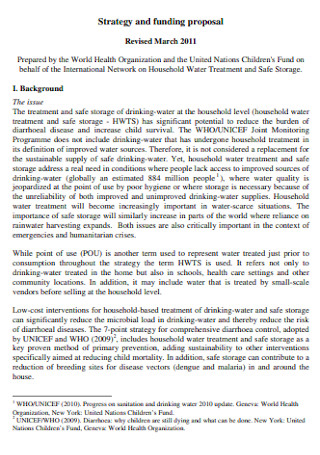
Strategy and Funding Cover Proposal
download now -

Organization Funding Proposal
download now -

Non Profit Funding Proposal
download now -
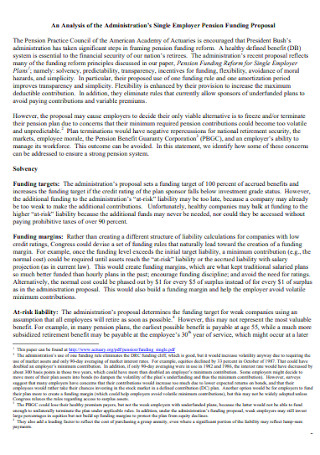
Fundraising Funding Proposal
download now -
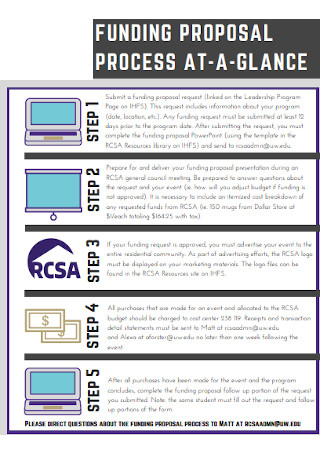
Simple Sponsorship Funding Proposal
download now -

Funding Budget Proposal Summary
download now -
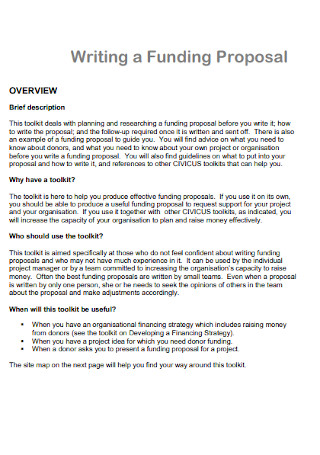
Basic Writing a Funding Proposal
download now -
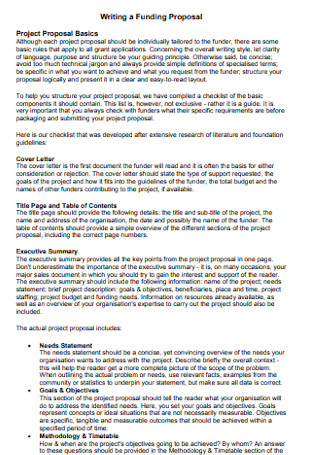
Written Funding Proposal
download now -
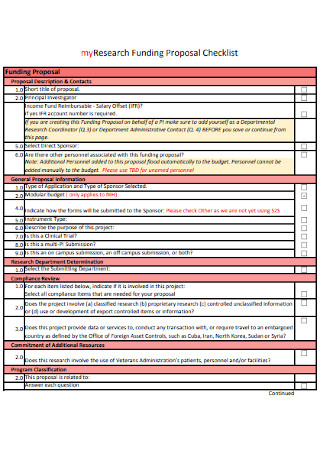
Church Funding Proposal Checklist
download now -
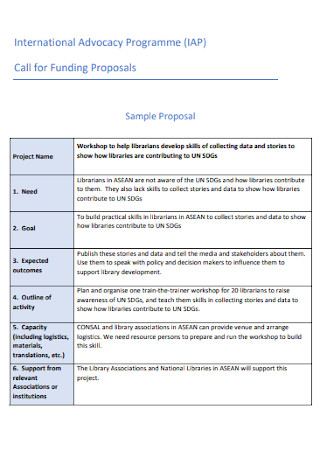
Call for Funding Proposal Writing
download now -
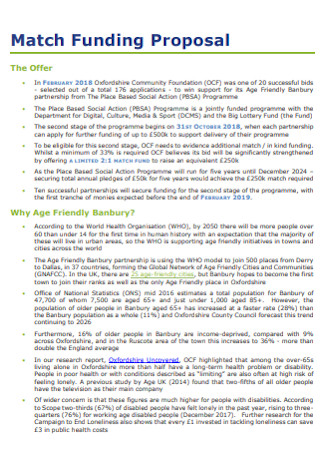
Academic Funding Proposal
download now
What Is a Funding Proposal?
A funding proposal is basically like your average business proposal except that its data specifically request funds to make a proposed project possible. Expect the proposal to be a detailed document about the overall plan of a project including an interesting case to persuade donors in funding a particular purpose. In short, you write the proposal to coax a funder into giving money to your project or organization. Hence, the goal is not simply to describe the project but to actually persuade effectively.
According to Statista’s 2018 research survey, around 4.6% of nonprofit funding went to organizations focusing on arts and culture.
Why Is a Funding Proposal Important?
It takes a thorough process to come up with a proficient funding proposal. So why should you take time in writing it when you can simply ask for a donor’s financial aid by talking? First, asking for a certain budget, especially a big one, should be handled professionally. Don’t expect funders to just give money without second thoughts since they need to trust the overall structure of your plan before accepting a funding request. And if that doesn’t convince you yet, here are some reasons that prove how essential funding proposals are:
To Collect Funds Professionally
A funding proposal is necessary for a bigger chance of donors to grant funds and organizations to collect those funds. That is because every detail about a project, word by word, is carefully discussed in an engrossing proposal. Think of this basic proposal as evidence of a transaction since funders expect the written plan to happen in reality after they hand out financial help.
To Fulfill an Organization’s Purpose
The best thing a funding proposal can offer is how organizations that lack a budget but have high hopes and dreams for successful projects can finally meet their objectives. This time, money doesn’t stop a project from happening because of generous funders in the process. Thus, a funding proposal eventually leads to a funding agreement. That is when the funder accepts the deal and pushes through with the plan.
To Cover Different Types of Causes
Funding proposals may tackle all sorts of reasons for the need to prompt a financial request. You can talk about any type of cause such as funding an agricultural project, business partnership, church sponsorship, government event, school fundraising, real estate investment, or even research. In fact, 4.6% of nonprofit funding went to arts and culture organizations in 2018. But no matter what your goal is, make sure your donor would actually be interested and compelled to help you on your journey there.
To Provide a Detailed Vision of What’s to Happen
It is too broad to say you need $100,000 for a charitable event. You have to expound further, which is the purpose of creating a funding proposal. Treat the document as your vision statement where funders have an idea as to where proceeds go and what is expected to happen in the future. Hence, funders can also keep track of the plans and visions created by organizations that need financial help.
To Create Legal Evidence
It is critical that the funding proposal and funding agreement would be signed by both parties so in case any party did not fulfill what was promised, these documents can be used as legal evidence in court. You can certainly file for a dispute once a proposal, contract, or agreement is already signed and an organization fails to use the given budget as intended or the funder does not complete the amount of money according to what was planned.
The Basic Inclusions of a Funding Proposal
What makes a good funding proposal? Although every example of a funding proposal out there has some slight differences in format, content, or layout, there are still common denominators in such proposals. In this section, learn about the basic things you will find in an average funding proposal.
How Do You Write a Funding Proposal?
Asking for money is easier said than done. In fact, the challenge is more on how to convince funders and donors to fund your project or organization. And since you already learned so much about what a funding proposal is, its importance, and its staple elements, it is time to apply your knowledge to the test by making the funding proposal itself. To do that, simply follow these steps on how to write a funding proposal:
Step 1: Study Your Organization and Assess Goals
Before even bothering to write a funding proposal, it is essential that you know your company very well and that you are properly introduced to the goals and objectives behind the need to make a funding request. Otherwise, how will you win a funder to help you without being direct about your organization’s background and goals? Full data analysis of your objectives and company background will certainly make a difference and be sure to take notes of the important parts worth mentioning in your proposal later.
Step 2: Use a Sample Funding Proposal
Sample funding proposal templates, as seen above in this article, are the ultimate solution you need to come up with funding proposals within minutes. Each template is premade, curated, and ready to edit; thus, writing from scratch is no longer necessary. Treat the sample templates as your toolkit since they guide you on what standard funding proposals are like. You may optimize a business funding proposal sample, startup funding proposal sample, donor funding proposal sample, and lots of other options.
Step 3: Complete the Elements of a Funding Proposal
From the cover letter, executive summary, company introduction, and the rest of the elements of a funding proposal discussed earlier, be sure to add them to your funding proposal. These elements complete your proposal in the first place. Should you wish to add more provisions to the document, you may do so as long as the inclusions are still relevant to the proposal. Also, arrange when to introduce each element by keeping the transition smooth and easy to follow.
Step 4: Edit and Review Your Work
Nobody wants to submit a flawed funding proposal because you will expect it to be rejected right away. That means you have to look back at your work from the very first page down to the last one and check for errors. Misspellings and inaccurate information must be rectified. Also, it helps to have your own fact sheet as a basis for whether everything you wrote is precise or not. It also helps to consider other professionals into checking your work for some recommendations.
Step 5: Consider the Right Time to Submit the Proposal
An unpopular opinion but actually a very important step is to consider the timing when it comes to submitting your funding proposal. Don’t just submit randomly. First things first, get to know your potential donors. It helps to consider a background check towards your potential funders so you will know what projects interest them or what they dislike. Also, check if they have a lot on their hands at the moment because if they recently funded a bunch of expensive projects already, chances are they might not help you anymore.
FAQs
Who needs a funding proposal?
Funding proposals are necessary for nonprofit organizations, startup companies, fundraisers, and basically anyone in need of monetary support for any purpose.
How do I find grants?
You can look for grants for your nonprofits from state government sites, private foundations, philanthropist-driven organizations, the United Way, and other local or state resources.
What are the four types of grants?
The four types of grants that will help accomplish your project goals and mission statements are competitive grants, formula grants, continued grants, and pass-through grants.
Raising money without giving some light to your idea, project, or organization is like waiting for a miracle to happen in a hopeless universe. Be realistic. That means you actually have a thoughtful plan with SMART goals before even asking for funds. And this is where a funding proposal plays a crucial role in the process. That proposal marks the very foundation of whatever project or concept you plan to seek funds to. Now that you know what makes up a funding proposal with the help of sample funding proposal templates as your draft, success is just right around the corner. Optimize a template now!
